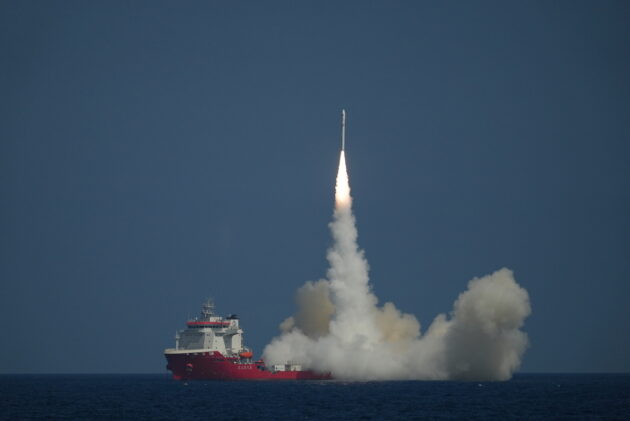
China conducts 12th sea-based satellite launch successfully
Galactic Energy, a private rocket maker in Beijing, made the third sea-based launch mission of its Ceres 1 carrier rocket on Thursday afternoon.
By now, China has performed 12 sea-based launches, involving four types of rockets: Long March 11, Smart Dragon 3, Ceres 1 and Gravity 1.
The company said in a news release that the rocket blasted off at 1:22 pm from a mobile launch platform — a modified deck barge — in the Yellow Sea off the eastern province of Shandong and then sent six satellites into a sun synchronous orbit about 535 kilometers above the Earth.
The satellites, from multiple operators, will be used to collect meteorological data, demonstrate optical remote-sensing technologies and collect hyper-spectral remote-sensing data, according to Galactic Energy.
So far, Galactic Energy has carried out 15 orbital launches using the Ceres 1 model, far outperforming other private competitors. These flights have placed 54 commercial satellites into space.
The Ceres 1’s first sea-based launch took place in September 2023 off the coast of Shandong, placing four Tianqi satellites into space. That mission made Galactic Energy the first Chinese private company to launch a rocket at sea.
The second such mission happened in May and also deployed four satellites.
The solid propellant Ceres 1 is about 20 meters tall, has a diameter of 1.4 meters and mainly burns solid propellant. With a liftoff weight of 33 metric tons, it is capable of sending a 300-kilogram satellite or several satellites with a combined weight of 300 kg, to a 500-km sun synchronous orbit, or 350-kg payloads to a low-Earth orbit at an altitude of 200 km.
For more visit China Daily
For subscriptions on news from China Daily, or inquiries, please contact China Daily Africa Ltd on +254 733 566 499 or write to enquiries@chinadailyafrica.com
